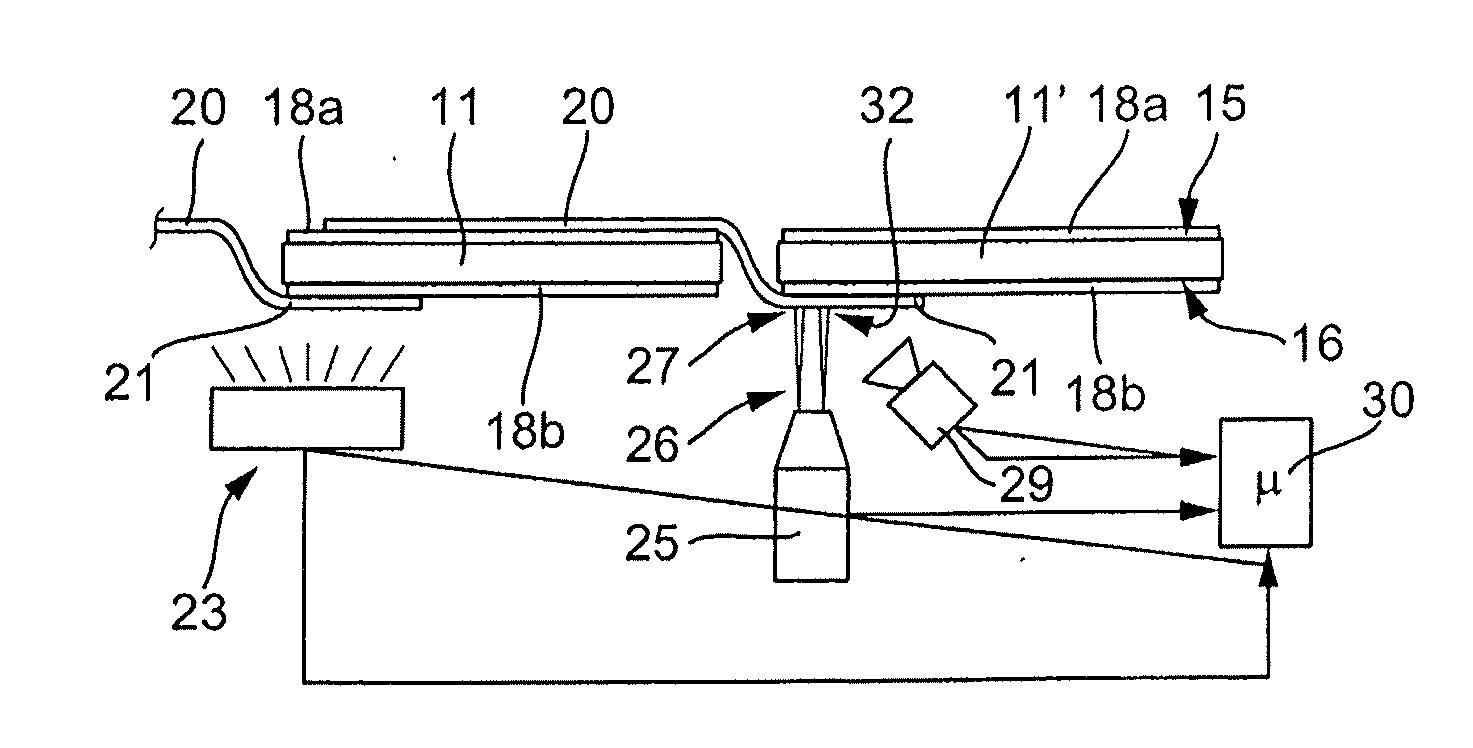Method for Soldering Contact Wires to Solar Cells
- Summary
- Abstract
- Description
- Claims
- Application Information
AI Technical Summary
Benefits of technology
Problems solved by technology
Method used
Image
Examples
Embodiment Construction
[0026]FIG. 1 illustrates in plan view a first solar cell 11 and on the right alongside the latter a second solar cell 11′. These two solar cells 11 and 11′, possibly also with further solar cells (not illustrated) already connected or yet to be connected, are formed as a chain 13 or so-called stringer. A completely interconnected solar module is produced from a plurality of such chains 13 in parallel with one another, as is known per se. In conjunction with FIG. 2 it can be seen that the solar cells 11 and 11′ have a top side 15 and an underside 16.
[0027]The top side 15 bears two narrow strip-shaped contact regions 18a, which are produced in a conventional manner by a metal coating on the solar cell. There can also be three of such contact regions. Corresponding metal-coated contact regions 18b are provided on the underside 16, said contact regions likewise running over the entire length of the solar cell 11 and 11′.
[0028]The solar cells 11 and 11′ are at a distance of a few millime...
PUM
| Property | Measurement | Unit |
|---|---|---|
| Temperature | aaaaa | aaaaa |
| Fraction | aaaaa | aaaaa |
| Fraction | aaaaa | aaaaa |
Abstract
Description
Claims
Application Information
 Login to View More
Login to View More - R&D
- Intellectual Property
- Life Sciences
- Materials
- Tech Scout
- Unparalleled Data Quality
- Higher Quality Content
- 60% Fewer Hallucinations
Browse by: Latest US Patents, China's latest patents, Technical Efficacy Thesaurus, Application Domain, Technology Topic, Popular Technical Reports.
© 2025 PatSnap. All rights reserved.Legal|Privacy policy|Modern Slavery Act Transparency Statement|Sitemap|About US| Contact US: help@patsnap.com



